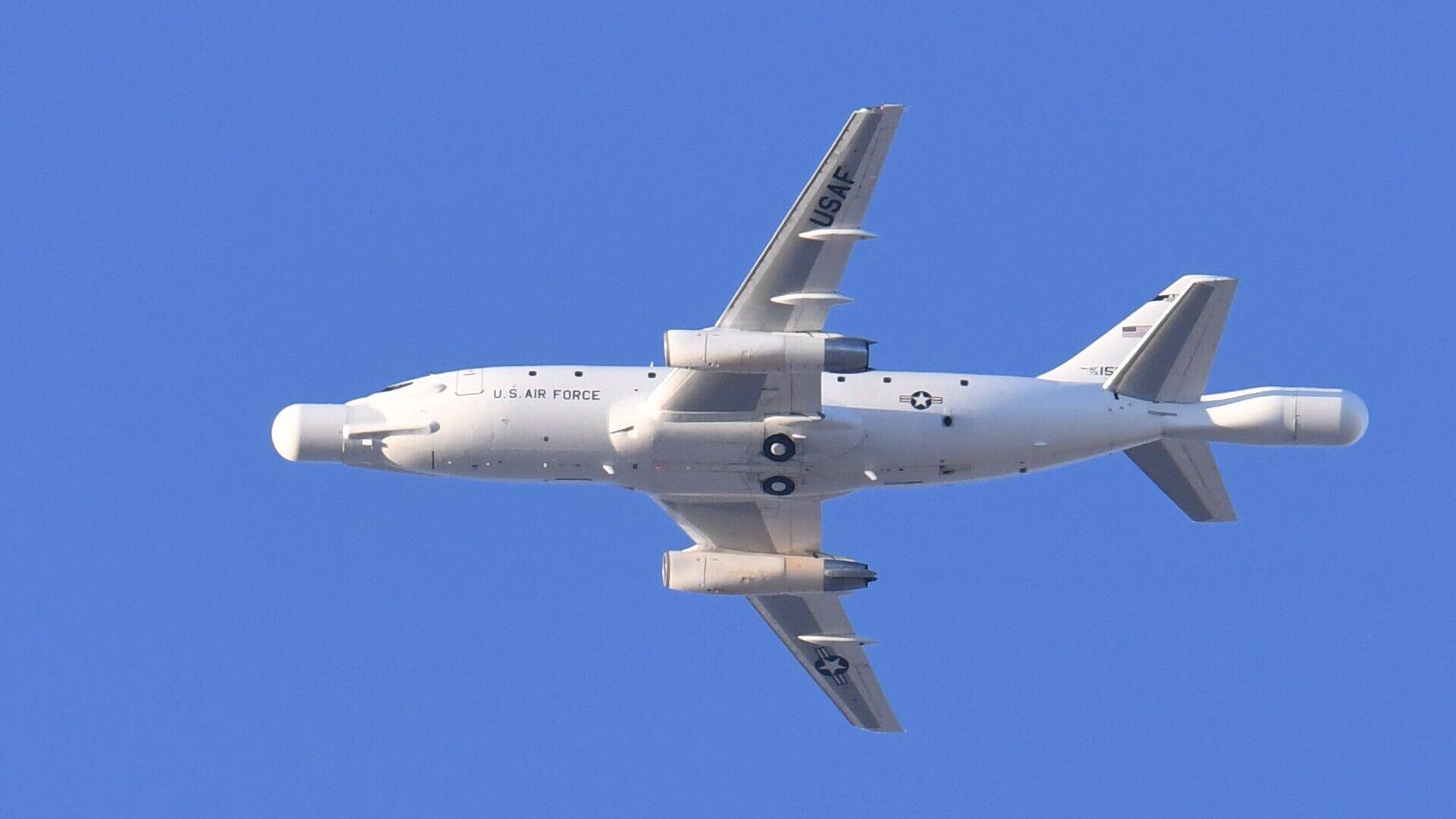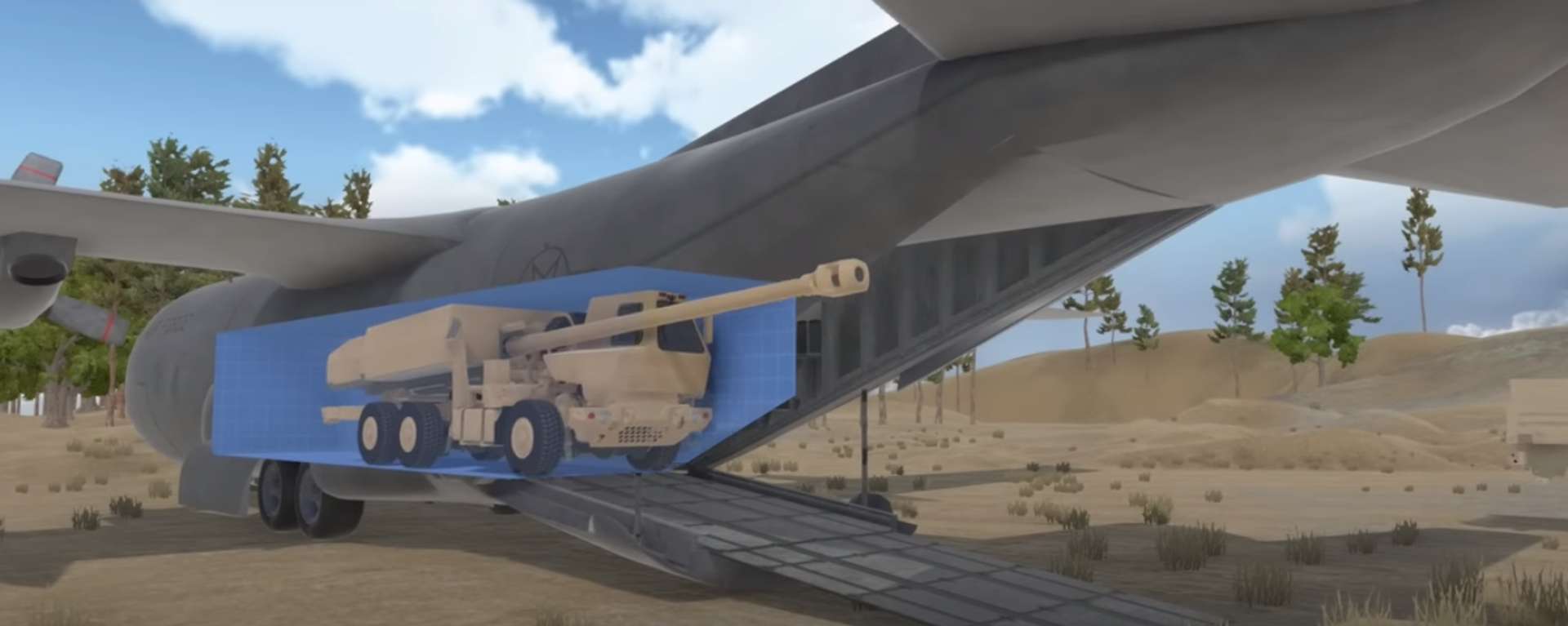https://sputnikglobe.com/20220604/us-air-forces-one-of-a-kind-flying-military-lab-spotted-at-oklahoma-airport-1095988165.html
US Air Force's One-of-a-Kind Flying Military Lab Spotted at Oklahoma Airport
US Air Force's One-of-a-Kind Flying Military Lab Spotted at Oklahoma Airport
Sputnik International
The NT-43 is a flying test bed developed in the early 2000s based on the Boeing T-43 trainer (Boenig 737-200). The NT-43A radar test bed is used to study... 04.06.2022, Sputnik International
2022-06-04T00:47+0000
2022-06-04T00:47+0000
2022-06-04T00:46+0000
us
military & intelligence
boeing 737
plane
oklahoma
https://cdn1.img.sputnikglobe.com/img/07e6/06/03/1095988491_0:100:1921:1180_1920x0_80_0_0_419f7fe483de532394dd67ace2ed448a.jpg
The US Air Force's highly modified NT-43, better known by its callsign "RAT55," recently flew outside of its regular highly-defined operational bounds for the first time, The War Zone reported. RAT55 is peculiar not only by the fact that it is considered one of the strangest Boeing 737s in the sky but also by the fact that it is almost impossible to see it in the air. It exists and operates nearly entirely within the desert air training ranges that cover significant swaths of airspace above southern California and Nevada, frequently disappearing into Area 51 or the Tonopah Test Range Airport, per the report.The plane is valuable for the military as it serves as a flying aircraft signature measurement lab. The outlet noted that RAT55 always draws a lot of attention when it makes an appearance, whether it is captured on camera over the Mojave Desert with a B-2 Spirit in tow or on plane tracking software. On June 1, 2022, it flew east to Ardmore, Oklahoma. According to the War Zone, the almost 50-year-old plane, like any other 737, requires routine maintenance, including depot-level work and checks. It is currently one of a small handful of first-generation 737s still in service, and despite light use and likely thoughtful care, the aircraft will only get more difficult to maintain as time goes on.The outlet speculated that the purpose of the flight to Oklahoma was to have RAT55 inspected and repaired if needed. Its major changes reportedly put a particular strain on the aircraft's structure. The load on the airframe is amplified because RAT55 frequently works at lower altitudes alongside its target "customer" aircraft. It has previously been seen at a heavy maintenance facility during its second life as a vital flying sensor lab.More to the aircraft, aside from routine maintenance, the massive modifications made to the airframe intended to hold radar arrays, infrared and other optics, as well as communications gear and associated technology, must be custom fabricated, altered to accept new technologies, and maintained and tested to ensure they are safe to fly. As the aircraft is genuinely unique, it will require people who are used to making complex but safe modifications to existing airframes for specific missions. The last time RAT55 went to the Oklahoma airstrip for maintenance was in December 2021, lingering there for approximately one month before returning west.The considerable age of the aircraft raises the question of preparing a replacement for it, per the outlet. With the Next Generation Air Dominance (NGAD) program well underway, the B-21 about to be rolled out, the RQ-180 in the air, and many other programs, including stealthy unmanned aircraft that will require similar services, even an extra airframe or two to supplement RAT55's capabilities is reportedly needed by the USAF.According to the report, a Boeing 737-700 plane registered to the Air Force's Rapid Capabilities Office with the n-number N712JM would be RAT55's replacement or one of its replacements. Since April, that aircraft is said to have been flying on what appear to be test flight missions across the region out of Waco, Texas, where a big L3 plant that makes aircraft modifications is located.Still, according to the report, the USAF is expected to use aircraft like the RAT55 for many years to come. Some of the tasks it does could be done with podded systems or smaller planes in the future, with upgrades that take advantage of newer radar capabilities, as well as sophisticated digital modeling. However, low-observable aircraft will still require in-flight validation.
https://sputnikglobe.com/20220503/us-air-force-wants-to-revive-navys-aborted-railgun-shell-programme-to-shoot-down-cruise-missiles-1095238581.html
oklahoma
Sputnik International
feedback@sputniknews.com
+74956456601
MIA „Rossiya Segodnya“
2022
News
en_EN
Sputnik International
feedback@sputniknews.com
+74956456601
MIA „Rossiya Segodnya“
Sputnik International
feedback@sputniknews.com
+74956456601
MIA „Rossiya Segodnya“
us, military & intelligence, boeing 737, plane, oklahoma
us, military & intelligence, boeing 737, plane, oklahoma
US Air Force's One-of-a-Kind Flying Military Lab Spotted at Oklahoma Airport
Kirill Kurevlev
Managing Editor
The NT-43 is a flying test bed developed in the early 2000s based on the Boeing T-43 trainer (Boenig 737-200). The NT-43A radar test bed is used to study stealth aircraft technologies, new radar-absorbing coatings, and IR signature reduction technologies.
The US Air Force's highly modified NT-43, better known by its callsign "RAT55," recently flew outside of its regular highly-defined operational bounds for the first time, The War Zone
reported. RAT55 is peculiar not only by the fact that it is considered one of the strangest Boeing 737s in the sky but also by the fact that it is almost impossible to see it in the air. It exists and operates nearly entirely within the desert air training ranges that cover significant swaths of airspace above southern California and Nevada, frequently disappearing into Area 51 or the Tonopah Test Range Airport, per the report.
The plane is valuable for the military as it serves as a flying aircraft signature measurement lab. The outlet noted that RAT55 always draws a lot of attention when it makes an appearance, whether it is captured on camera over the Mojave Desert with a B-2 Spirit in tow or on plane tracking software.
On June 1, 2022, it
flew east to Ardmore, Oklahoma. According to the War Zone, the almost 50-year-old plane, like any other 737, requires routine maintenance, including depot-level work and checks. It is currently one of a small handful of first-generation 737s still in service, and despite light use and likely thoughtful care, the aircraft will only get more difficult to maintain as time goes on.
The outlet speculated that the purpose of the flight to Oklahoma was to have RAT55 inspected and repaired if needed. Its major changes reportedly put a particular strain on the aircraft's structure.
The load on the airframe is amplified because RAT55 frequently works at lower altitudes alongside its target "customer" aircraft. It has previously been seen at a heavy maintenance facility during its second life as a vital flying sensor lab.
More to the aircraft, aside from routine maintenance, the massive modifications made to the airframe intended to hold radar arrays, infrared and other optics, as well as communications gear and associated technology, must be custom fabricated, altered to accept new technologies, and maintained and tested to ensure they are safe to fly.
As the aircraft is genuinely unique, it will require people who are used to making complex but safe modifications to existing airframes for specific missions. The last time RAT55 went to the Oklahoma airstrip for maintenance was in December 2021, lingering there for approximately one month before returning west.
The considerable age of the aircraft raises the question of preparing a replacement for it, per the outlet. With the Next Generation Air Dominance (NGAD) program well underway, the B-21 about to be rolled out, the RQ-180 in the air, and many other programs, including stealthy unmanned aircraft that will require similar services, even an extra airframe or two to supplement RAT55's capabilities is reportedly needed by the USAF.
According to the report, a Boeing 737-700 plane registered to the Air Force's Rapid Capabilities Office with the n-number N712JM would be RAT55's replacement or one of its replacements. Since April, that aircraft is said to have been flying on what appear to be test flight missions across the region out of Waco, Texas, where a big L3 plant that makes aircraft modifications is located.
Still, according to the report, the USAF is expected to use aircraft like the RAT55 for many years to come. Some of the tasks it does could be done with podded systems or smaller planes in the future, with upgrades that take advantage of newer radar capabilities, as well as sophisticated digital modeling. However, low-observable aircraft will still require in-flight validation.


